
Anthony Davis
About the Author
Anthony Devis is a 28-year-old man who studies ancient items. He looks at things from a very long time ago, like tools, pottery, jewelry and coins. He attends many lectures to know more about how and where they were made.
Every day Anthony works with ancient items. He carefully cleans them, learning what they tell us about the past. He reads a lot to understand more and sometimes even visits places where ancient items are found. This young man shares his discoveries via social media, explaining how to understand the value. Anthony also helps the subscribers to know how many quarters are in a $10 roll of quarters.
Connect with Anthony



Numismatic Perspective
For coin collectors, a simple question like how many quarters are in a roll of $10 can open up a world of numismatic possibilities. While the face value is straightforward, the true worth of such a roll lies in the potential for discovering rare dates, valuable mint marks, or even intriguing error coins that may be hidden.
Types of Quarter Rolls & What to Look For
| Name | Price (USD) |
| 1965 Washington Quarter | $0.25 – $5 |
| 1970-S Washington Quarter | $0.25 – $5 |
| 1999 Delaware State Quarter | $0.25 – $5 |
| 2004-D Wisconsin Extra Leaf Quarter | $500 – $2,500+ |
| 2019-W American Memorial Park Quarter | $100 – $500+ |
| 2020-W Salt River Bay Quarter | $100 – $1,800+ |
| 1932-D Washington Quarter | $1,000 – $15,000+ |
| 1932-S Washington Quarter | $1,000 – $15,000+ |
| 1940 Washington Quarter | $10 – $50 |
| 1964 Washington Quarter | $10 – $50 |
| 1950-D/D Doubled Die Quarter | $500 – $5,000+ |
| Unopened 1950-D Mint-Sealed Roll | $40,000 – $100,000+ |
1965 Washington Quarter
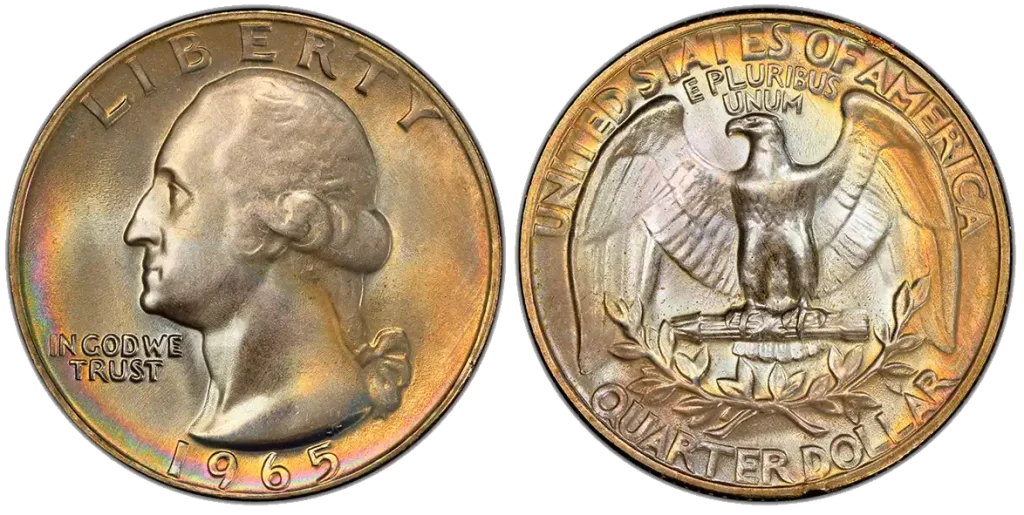
- Mintage: Over 1.8 billion
- Composition: 75% Copper, 25% Nickel
- Special Features: On the front, you see George Washington’s head facing left. On the back, there’s an eagle with its wings open, sitting on arrows with olive branches below. Knowing how much in a roll of quarters helps you quickly calculate the total value of your spare change.
- Historical Context: This coin was made because silver became more expensive, so they stopped using silver in coins in 1965 to save money.
1970-S Washington Quarter
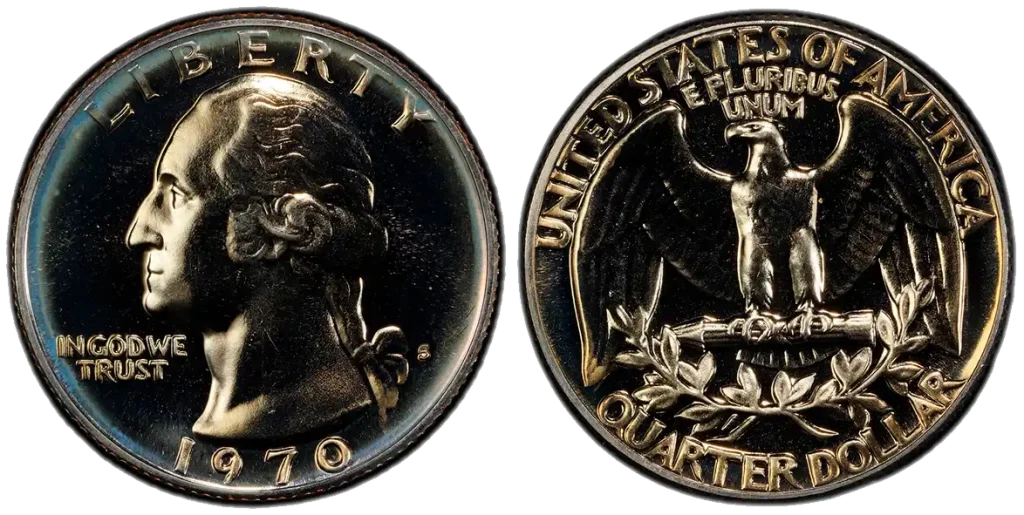
- Mintage: Over 316 million
- Composition: 75% Copper, 25% Nickel
- Special Features: It has the same design as the 1965 quarter – George Washington on the front and the eagle on the back. The “S” mark tells you it was made in San Francisco.If you’re wondering where can I get a roll of quarters, coin auction is typically the most reliable place.
- Historical Context: This was a regular quarter made during the time when coins were no longer made of silver.
1999 Delaware State Quarter
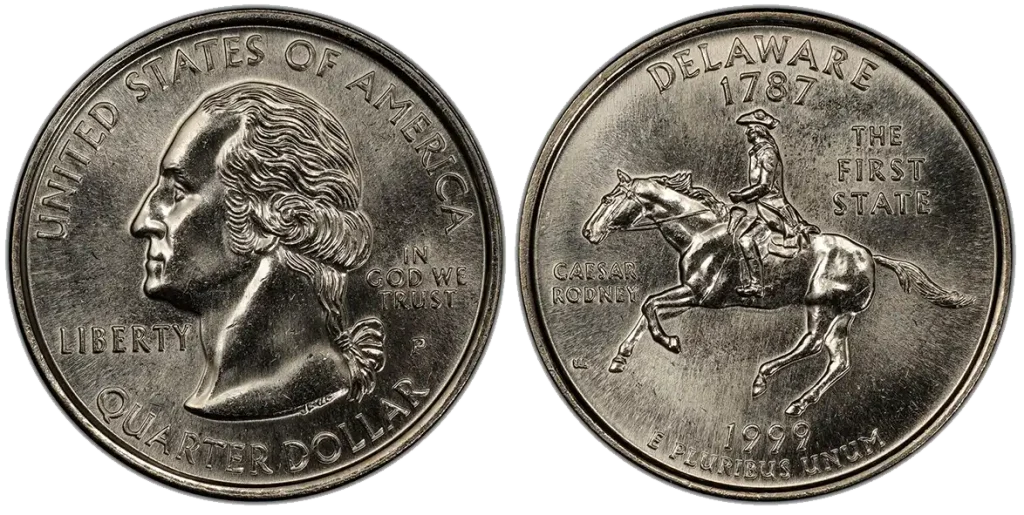
- Mintage: Over 774 million
- Composition: 75% Copper, 25% Nickel
- Special Features: George Washington is still on the front. But on the back, you see Caesar Rodney, an important person who signed the Declaration of Independence, riding a horse. This coin is common, but collectors still want to know how much money is in a roll of quarters before checking details.
- Historical Context: This coin started a very popular program where 50 different quarters were made, each honoring a U.S. state in the order it joined the country.
2004-D Wisconsin Extra Leaf Quarter
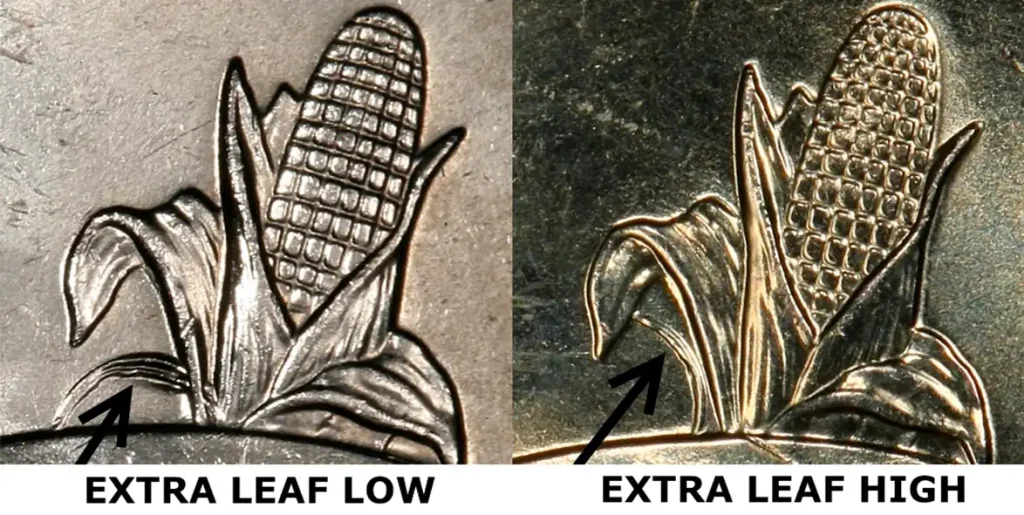
- Mintage: Very few
- Composition: 75% Copper, 25% Nickel
- Special Features: The back of this quarter shows a cow, a round of cheese, and an ear of corn. The “Extra Leaf” versions have an extra leaf on the ear of corn. Understanding how much is a roll of quarters worth can be important if you suspect it contains rare or silver coins.
- Historical Context: This was an accident during the making of the coin in the 50 State Quarters Program. A standard question for beginners is how many quarters in a roll of quarters, which is consistently 40 coins.
2019-W American Memorial Park Quarter
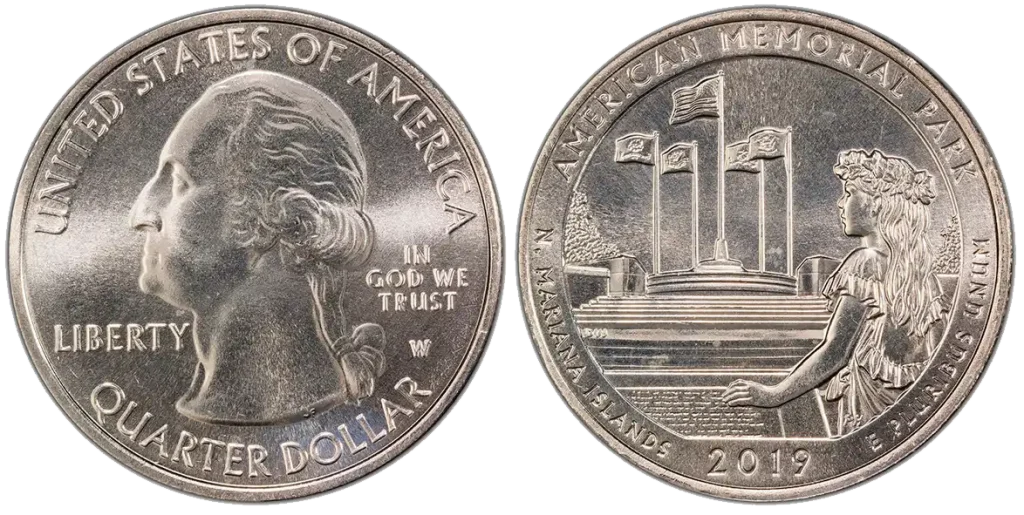
- Mintage: 2 million
- Composition: 75% Copper, 25% Nickel
- Special Features: The front has a new picture of George Washington. The back shows a young Chamorro woman in traditional clothes, a special latte stone and a sling stone These things show the history and culture of the Mariana Islands. The “W” mark on the coin tells you it was made at the West Point Mint..
- Historical Context: These coins were made to get more people interested in collecting coins.It’s useful to know how many dollars in a roll of quarters for quick currency calculations.
2020-W Salt River Bay Quarter
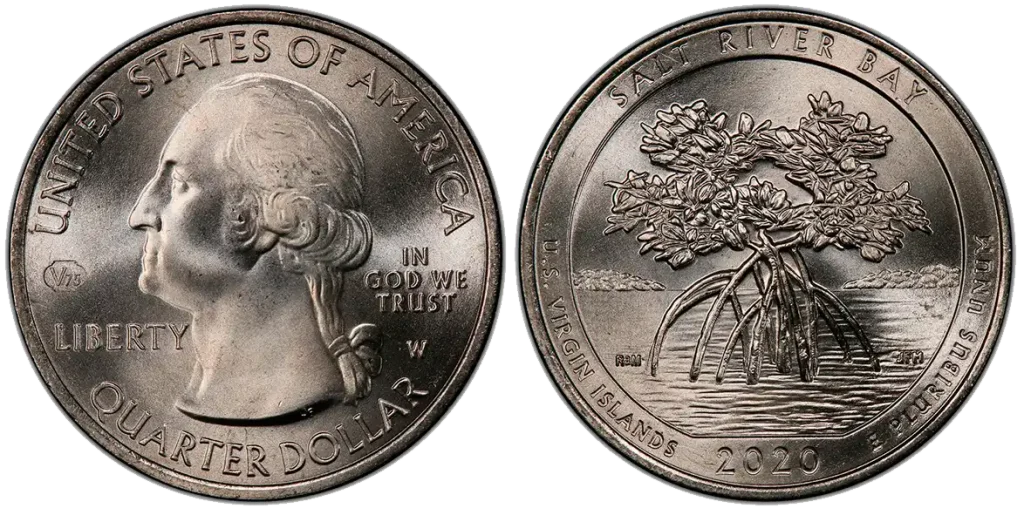
- Mintage: Only 2 million
- Composition: 75% Copper, 25% Nickel
- Special Features: The front has the same George Washington picture. The back shows a red mangrove tree with an old sugar mill ruin behind it. Similar to the 2019-W quarter, the “W” mark from the West Point Mint makes this coin rare and special.
- Historical Context: This represents the nature and history of the U.S. Virgin Islands. It continued the idea of releasing a small number of “W” quarters to make coin collecting more exciting. You can easily figure out how many dollars are in a roll of quarters once you know the total coin count.
1932-D Washington Quarter
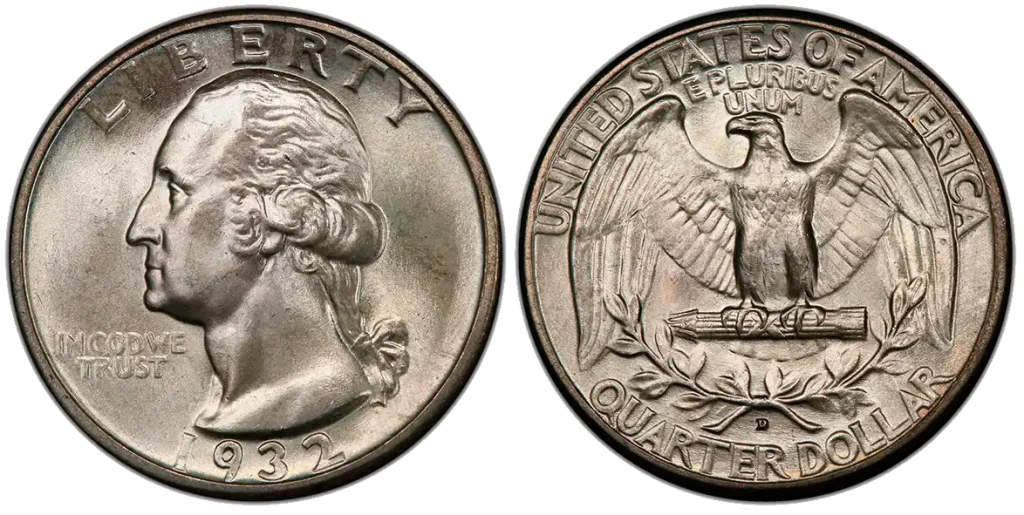
- Mintage: 436,800
- Composition: Silver 90%, Copper 10%. ASW 5,625 grams
- Special Features: The front has George Washington facing left. The back shows a grand eagle with open wings, sitting on arrows with olive branches below. The D mark is below the eagle. Understanding how many coins are in a roll of quarters is a basic detail for organizing your collection.
- Historical Context: This coin was part of the first year for the Washington Quarter series, made to remember George Washington’s 200th birthday.
1932-S Washington Quarter
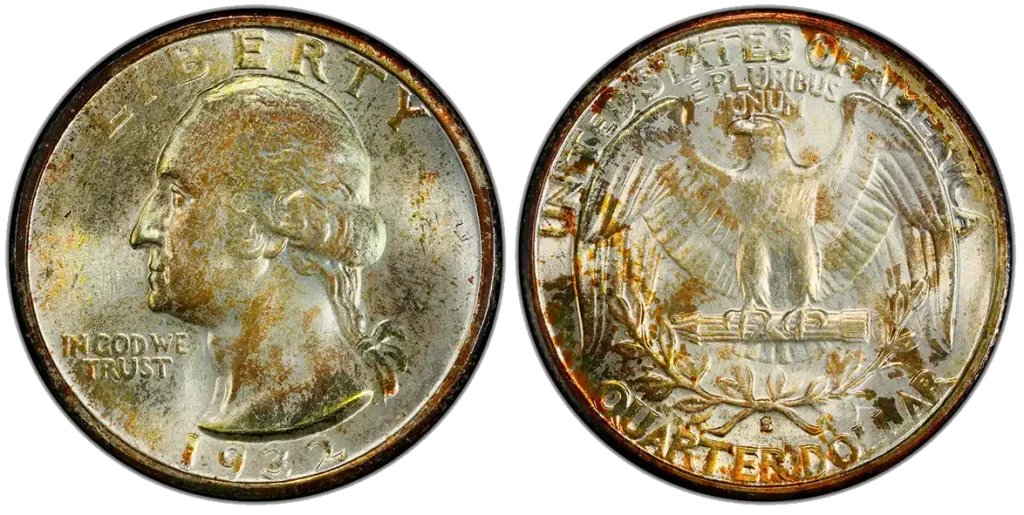
- Mintage: 408,000
- Composition: Silver 90%, Copper 10%. ASW 5,625 grams
- Special Features: It has the same classic design for both sides – George Washington’s head on the front and the eagle on the back. The S mark is below the eagle on the back. This is the rarest regular Washington Quarter ever made. Keeping its original design in good condition makes it very valuable.
- Historical Context: Along with the 1932-D, these are the rarest Washington Quarters that were put into circulation.
1940 Washington Quarter
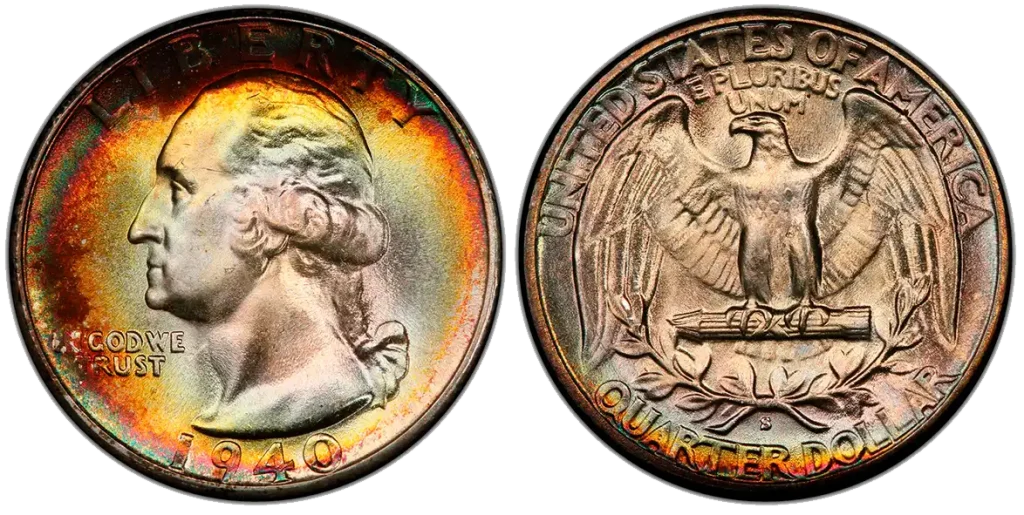
- Mintage: Over 52 million
- Composition: Silver 90%, Copper 10%. ASW 5,625 grams
- Special Features: It has the classic design of George Washington on the front and the eagle on the back, just like earlier silver quarters.
- Historical Context: This was regular production before World War II, when saving metals became very important.
1964 Washington Quarter
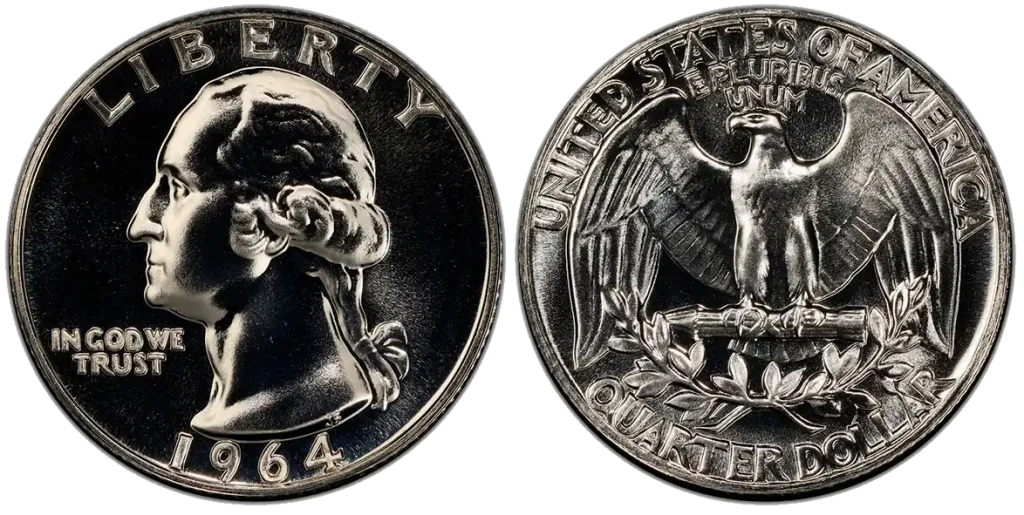
- Mintage: Over 704 million
- Composition: Silver 90%, Copper 10%. ASW 5,625 grams
- Special Features: It has the familiar George Washington design on the front and the eagle with open wings on the back.
- Historical Context: The U.S. Mint stopped making silver coins in 1965 because silver became too expensive. This makes the 1964 quarters important as they mark the end of an era.
1950-D/D Doubled Die Quarter
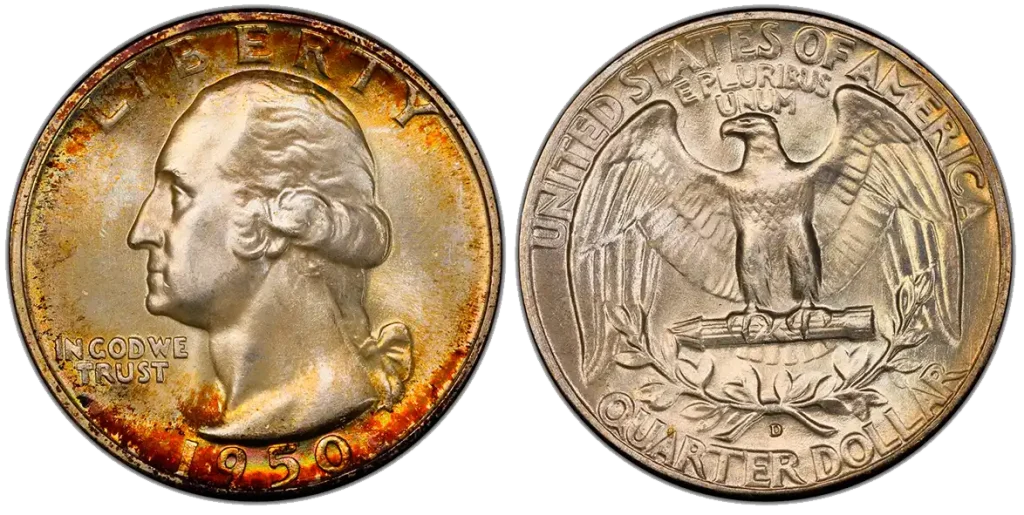
- Mintage: Very few
- Composition: Silver 90%, Copper 10%. ASW 5,625 grams
- Special Features: The overall design is normal for the 1950 Washington Quarter. The special thing about this coin is a clear doubling of the D mintmark.
- Historical Context: This was a mistake made during the minting process where the coin die was pressed twice from a master die at slightly different angles.
Unopened 1950-D Mint-Sealed Roll
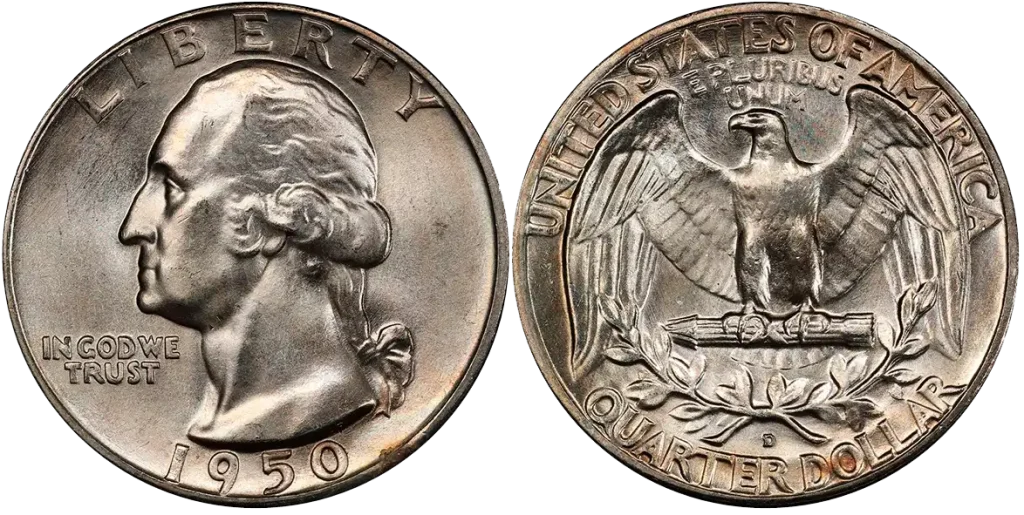
- Mintage: Very few
- Composition: Silver 90%, Copper 10%. ASW 5,625 grams
- Special Features: The value of this roll isn’t about one coin’s design, but about what the whole roll might contain. It has 40 unused 1950-D silver quarters still in their original US Mint wrapping.
- Historical Context: Collectors highly value such rolls not only for the chance to find high-quality coins and rare versions inside, but also for their historical importance as a perfectly preserved part of coin making from that time.
How to Identify a Valuable Quarter
Many also ask, how much does a roll of quarters weigh, aiming to find the total value quickly. Here are some tips:
Check the Date and Mintmark
The first thing to do is look at the date on the quarter
- Old Silver Quarters: Quarters made before 1965 are special because they are made of 90% silver. These are usually worth more than their face value just for the silver.
- Key Dates: Some quarters from certain years are very rare and valuable. For example, the 1932-D or the 1950-D are well-known to collectors.
- “W” Mintmarks: Look for a small letter “W” on quarters from 2019 or 2020. This “W” means the coin was made at the West Point Mint, and they made very few of them.
Examine the Edges
The side of the quarter, called the “edge” or “rim,” can tell you about its metal.
- Silver Quarters: If your quarter is silver, its edge will be solid silver all the way around. You won’t see any other color.
- Clad Quarters: Newer quarters are clad, which means they have layers of different metals. If you look at the edge of these, you will see a copper stripe in the middle.
Look for Errors and Varieties
Sometimes, mistakes happen when coins are made, and these mistakes can make a quarter very valuable.
- Common Errors: Look for things like a doubled die, a coin that was off-centered when it was struck, or a missing mintmark.
- Examples of Valuable Errors: Some famous errors include the 2004-D Wisconsin Extra Leaf quarter and the 1999-P Spitting Horse
Weigh the Coin
The weight of a quarter can also tell you if it’s silver or not.
- Silver Quarters: A quarter made of silver should weigh about 6.25 grams.
- Clad Quarters: A clad quarter should weigh about 5.67 grams.
Inspect the Condition
The better the condition of your quarter, the more it will be worth to collectors.
- Uncirculated Coins: Coins that have never been used in daily buying and selling are called “uncirculated.” They are in perfect shape and can be worth much more.
- What to Look For: Check if the coin has its original shiny look. Also, look for very little wear on the design. If the details are sharp and clear, that’s a good sign. Even small scratches can lower its value.
FAQ
Are all quarter rolls worth $10?
No, not all quarter rolls are worth just $10. While a standard roll has 40 quarters and equals $10, some rolls can be worth much more. This happens if there are rare coins, silver coins, or coins with mistakes. For example, old rolls of silver quarters are worth a lot more than just their face value.
How can I tell if a quarter roll contains silver coins?
To check if a quarter roll has silver coins, look at the dates. Quarters made before 1965 are made of 90% silver. Also, sometimes you can see the side of the coins at the end of the roll. Silver quarters have a solid silver color on their edge, while newer coins will show a copper line in the middle of their edge.
What is the rarest quarter roll ever sold?
One of the rarest types of quarter rolls to be found and sold would be an unopened, original mint-sealed roll of 1950-D quarters. This is because these rolls could contain the very rare 1950-D/D doubled die quarters. If a roll is confirmed to have many of these rare error coins, its value would be extremely high. Some people may find how many quarters are in a roll of quarters from the bank.
Can I find rare quarters in bank rolls?
Yes, you can. Many collectors search through bank rolls to find rare quarters. Banks often have rolls of coins that have been used in daily life. Sometimes, these rolls can contain older silver coins, coins with low mintage numbers, or coins with errors.
What should I look for in modern quarter rolls?
In modern quarter rolls (coins made from 1965 onwards), you should look for several things. First, look for “W” mintmark quarters. These were made in West Point and have very low mintage numbers. Also, look for error coins like the 2004-D Wisconsin Extra Leaf Quarter.
Are there any valuable errors in recent quarter rolls?
Yes, there are valuable errors in recent quarter rolls. A famous example is the 2004-D Wisconsin Extra Leaf Quarter. This coin has a clear mistake where an extra leaf appears on the ear of corn. Such errors are usually made by accident during production and are highly sought after by collectors. For quick reference, knowing how many quarters are there in a roll of quarters helps with simple math.
Where is the best place to sell rare quarter rolls?
The best places to sell rare quarter rolls are through reputable coin dealers or at coin shows. You can also sell them online on auction sites that specialize in coins, but make sure to use a trusted platform. When you get a standard roll of quarters from a bank, how much does a roll of quarters cost is always $10, as you are simply exchanging one form of currency for another.
In conclusion, while knowing how many quarters are in a roll of 10 dollars sets the basic value, for collectors a roll is more than just ten dollars. It’s a chance to find hidden numismatic items, transforming a simple roll into history.